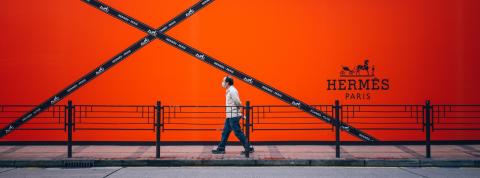
How are brand extensions used in the luxury sector?
In the luxury sector, brands are constantly looking for new ways to differentiate themselves and extend their market footprint. One strategy commonly used in this industry is brand stretching, to diversify their offer while preserving their prestige and exclusivity.
What is brand stretching?
Brand stretching is a marketing strategy in which an established brand extends its presence by introducing new products or services that are distinct from its core offerings. In the luxury context, this strategy is often used to capitalise on the brand's reputation and recognition in order to penetrate new market segments and strengthen customer loyalty.
Range extension as a symbol of luxification
For luxury brands, range extensions can serve as a symbol of luxification - "the phenomenon whereby a brand that was initially democratic and open to the greatest number of people adopts the codes and criteria of luxury to rise to the level of the big names" - by offering additional products or services that complement the experience of the main brand. For example, a high-end fashion brand may extend its range to include accessories such as handbags, shoes or fragrances, giving customers more options to express their personal style while remaining loyal to the brand.
Types of brand extension
Product line expansion
One of the most common types of brand extension in the luxury sector is product line expansion. This involves the introduction of new product variants or categories that share the same brand values and premium positioning. For example, the French fashion house Chanel expanded its product range by launching a luxury make-up line, capitalising on its reputation in the fashion industry.
Opening up to new market segments
Another approach is to extend the brand into new market segments or related industries, such as the Swiss watch brand Rolex, which has expanded its presence by entering the luxury accessories market with lines of bracelets, cufflinks and other high-quality items.
Vertical brand extension
Finally, some luxury brands opt for vertical brand extension, offering premium services that complement their core products. For example, the French champagne house Moët & Chandon offers exclusive tasting experiences and cellar tours, giving its customers a total immersion in the world of luxury and elegance.
Examples of brand stretching in the luxury sector
Louis Vuitton
Louis Vuitton, famous for its luxury handbags and luggage, has extended its brand by introducing a range of top-of-the-range perfumes. By associating its name with fragrances, the brand has managed to capture the essence of luxury in a new area, while preserving its image of elegance and sophistication.
Hermès
Hermès, renowned for its high-quality leather goods, has expanded its product range by launching ready-to-wear and fashion accessory lines. This brand extension has enabled Hermès to reach a wider audience while maintaining its aura of luxury and impeccable craftsmanship.
Bulgari
Bulgari, known for its luxury jewellery, has diversified its offering by introducing luxury hotels in exclusive destinations around the world. By offering high-end holiday experiences that reflect the elegance and refinement of the brand, Bulgari has succeeded in extending its presence in the luxury industry beyond jewellery.
Brand extension is a powerful strategy used by luxury brands to remain relevant and successful in an ever-changing market. By capitalising on their reputation and prestige, these brands can extend their influence while maintaining their exclusivity and appeal to affluent consumers.